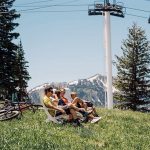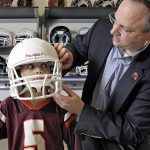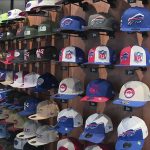While roaming the halls at any Outdoor Retailer trade show, it would be hard to imagine a time when the industry wasnt represented by the dedicated folks at the core of Outdoor Industry Association. Outdoor Retailer Summer Market this year will be the site of a significant celebration as OIA commemorates its 20th anniversary in service to the outdoor market.

OIA has grown into a multi-million dollar operation led by president and CEO Frank Hugelmeyer. The idea for an outdoor trade association hatched in the late 1980s when companies and individuals involved in the outdoor industry started talking about forming an independent association. The outdoor market was serving a broader lifestyle market and outdoor companies were beginning to congregate at the Outdoor Retailer Show. As OR grew, it became evident that the market had no organization to represent its interests.
The initial formation meetings occurred in the late 1980s, and the trade association was finally incorporated in 1989 as the Outdoor Recreation Coalition of America (ORCA). The founding group included an eclectic collection of people from groups ranging from outdoor specialty retailers to multi-national corporations, including Adventure 16, Backwoods, DuPont, Eastern Mountain Sports (EMS), Elephants Perch, JanSport, Patagonia, Recreational Equipment Inc. (REI), Sierra Designs, The North Face, and several others.
“There was a lot of discussion in the group about do we really need a trade organization?” recalls Sally McCoy, the former Sierra Design chief executive who is currently CEO of CamelBak Products. “In general, a lot of us that were in the outdoor business — we were in it because we liked to be independent and self-reliant. We spent an inordinate amount of time trying to decide if there was value in having a voice in Washington. Asking do we need a voice in Washington? seems funny now.
Dave Secunda was hired in the early 90s as the coalitions first full-time executive director. Secunda, who now serves as director for Avid 4 Adventure, remembers those early days, “It was an industry coming-of-age. With that came the need for collective representation and a collective point of view to affect legislation on issues.”
Initially, the evolving board of directors worked to defend, legitimize and grow the outdoor industry. Part of that mission was realized when ORCA created its Government Affairs Council and developed the first government relations agenda. In 1993, armed with its first significant funding in the form of a donation from the Outdoor Retailer trade show, along with the volunteer efforts of its founders, ORCAs membership grew to over 200 and the coalition moved to broaden its impact on the outdoor industry.
With an industry that was rapidly evolving, Secunda oversaw efforts to initiate the first true financial measurement of the outdoor industry with the State of the Industry Report, published in conjunction with SGMA. As ORCA searched for greater recognition and a more established identity, the associations relationship with Outdoor Retailer was further solidified with an exclusive endorsement agreement that gave ORCA the funding it needed.
In 1996, ORCA introduced itself to Capitol Hill with the National Summit on Outdoor Recreation. Eagle Creek President & CEO Steve Barker remembers just how hard it was to make that introduction to Washington, “In the days of ORCA wed have 15 minutes to meet with a Congressman. Wed spend the first 10 minutes explaining who we are not. We dont have anything to do with whales and we are not the guys who were in here last week talking about ATV access. By the time we got to identifying who we were, they were shuffling us out the door for the next appointment.”
The organization made its mark on a humanitarian level with the formation of the Tornado Emergency Relief Fund, raising over $100,000 to support victims and businesses struck by the tornado that touched down in Salt Lake City during setup for the 1999 Outdoor Retailer trade show.
On an administrative level, Frank Hugelmeyer was appointed as president and CEO in April 2000, a post that he still holds today. Hugelmeyer knows first-hand how far things have come since his first year on the job. “On the last day of December my first year there was $1,700 in the bank,” he says. “We started to focus on what we could be great at. That helped us be more relevant to the members and to have more clout in Washington. Were in a much different place now.”
In 2001, when the ORCA name was replaced by the more-appropriate moniker of Outdoor Industry Association. Steve Barker, the board chair from 2001-03 during the time of the name change, felt that the more appropriate branding was the key item that the association needed to solidify its identity. “Recognition was pretty low and pathetic,” explains Barker. “Part of that was because of our branding. We were called ORCA and nobody knew who the hell we were. We hadnt invested in dollars in getting our presence and the idea of human powered recreation was lost.” He adds, “The most important issue was the aging demographic of our consumer. We werent getting young people into our sports and activities. That was (the) number one issue that we identified at the time,” he said. “We were, and still are, concerned about the health and future growth of specialty stores that are the backbone of the industry.”
During the term of former Cascade Designs President Lee Fromson as board chair from 2003 to 2005, OIA hosted the first OIA Capitol Summit lobbying event in Washington D.C. For the first time, OIA provided all members with free research and released a new Participation Study and Top-Line Retail Sales Trend Report.
Today, the OIA and its board of directors, staff and working groups provides a variety of trade services to its membership base of more than 4,000 manufacturers, distributors, suppliers, sales representatives and retailers involved in the outdoor industry.









